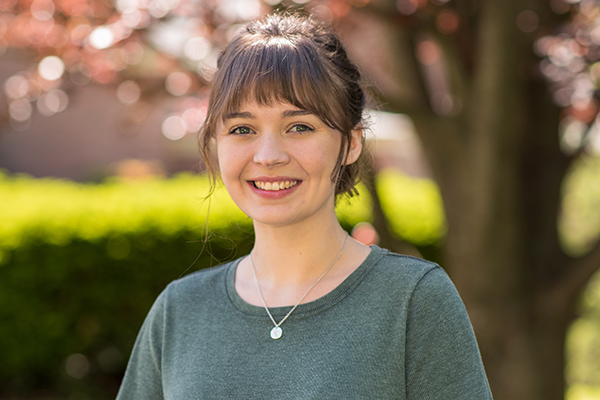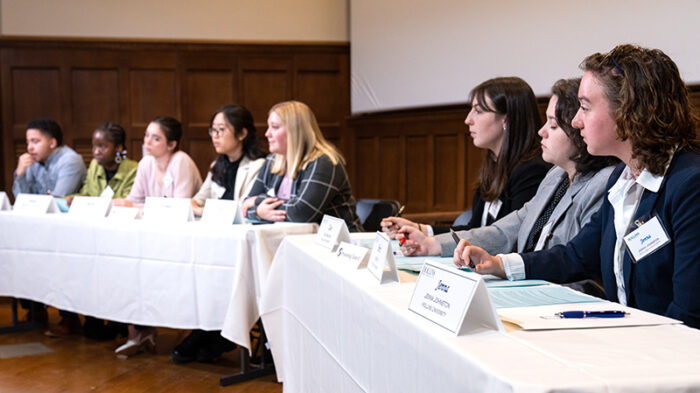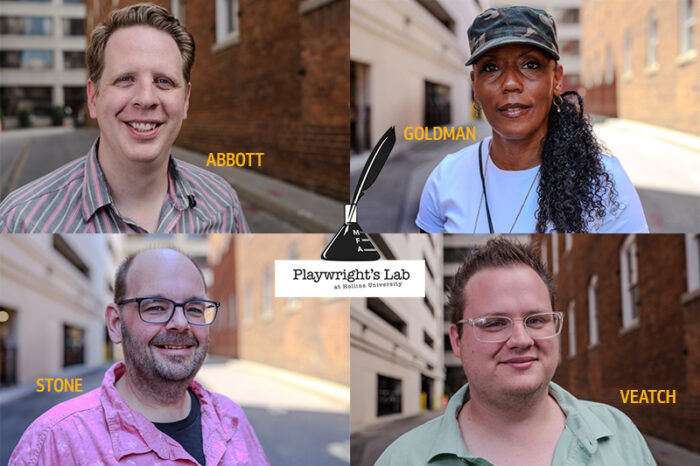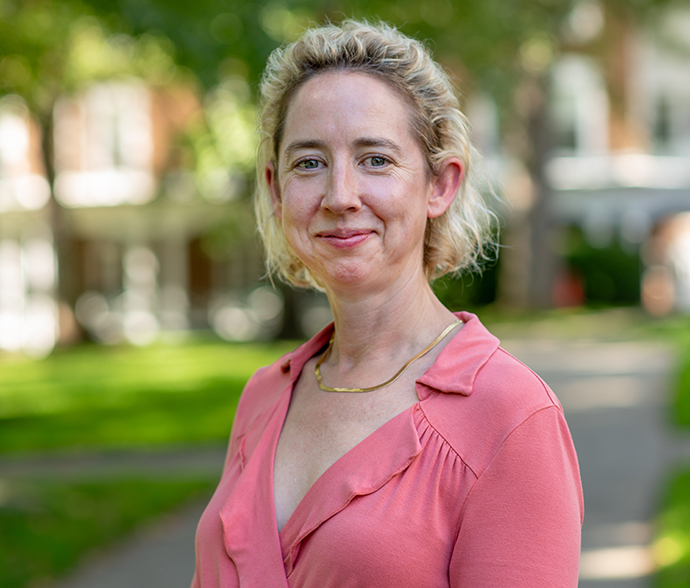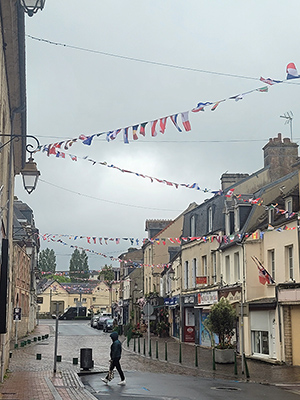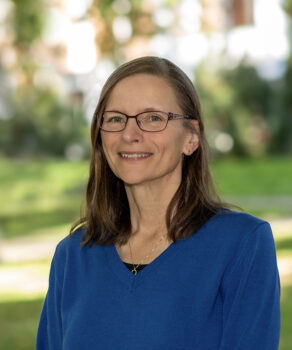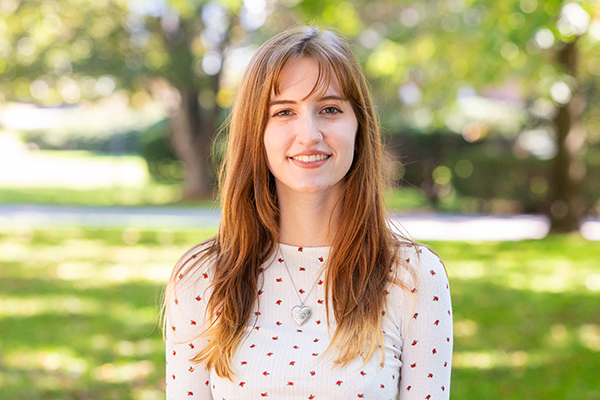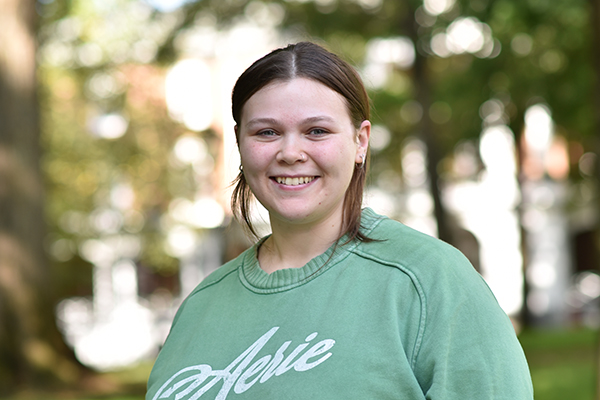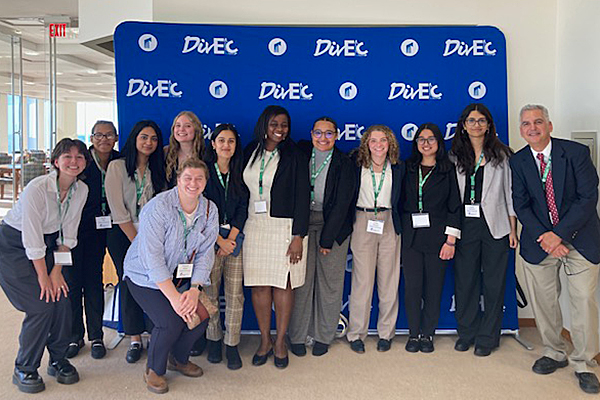History major Zoe Brooks ’23 grew up in the small town of Appalachia in Virginia’s Wise County, a mountainous region in the commonwealth’s southwestern corner whose history and culture are intertwined with the coal industry. As she began to consider topics for her senior honors thesis, Brooks was intrigued by the number of monuments to coal miners located within a relatively small area encompassing her hometown and nearby communities.
“There are parks dedicated to coal miners in Appalachia and in Big Stone Gap, where I went to high school, that are just 15 minutes apart,” she explains. “In Norton (also located in Wise County), and in Harlan County, Kentucky (which borders Wise County to the west), there are coal miner memorials. I wanted to look into why that was the case.”
But when she began researching Harlan County in particular and learned more about the often-violent conflicts there that stretched over decades between mine operators and workers who sought to organize, “I kind of got stuck in Harlan. I grew up knowing about ‘Bloody Harlan,’ and I got really interested in wanting to know what happened during the labor strikes there.”
As a result, Brooks is writing her thesis on the history of Depression-era labor unrest in southeastern Kentucky. She presented her preliminary findings this March at the 46th Annual Appalachian Studies Association Conference at Ohio University, which Ruth Alden Doan Assistant Professor of History Christopher Florio calls “a rare feat for an undergraduate.”
Even though she was seeking to immerse herself in events that happened less than one hundred years ago, Brooks learned that tracking down official or objective documentation would be more than challenging. “I realized that it’s literally impossible to figure out with complete certainty exactly what happened in Harlan,” Brooks says, “so I explored how different interpreters made sense of the unrest.”
Brooks took into account what she describes as “the insider/outsider dichotomy that comes with looking at Appalachian history. First, I researched outside authors who portrayed the miners either as abused victims suffering from capitalism’s inequities or as the passive victims of stereotypes commonly associated with the Appalachia region, such as what these authors deemed Appalachia’s inherently violent culture rather than as active leaders in their labor movement.”
Next, Brooks explored the perspective of what she describes as “the local elites, people from Kentucky who benefited from coal and benefited from keeping the mines open and making sure the miners weren’t making nearly enough to even be thought of as livable wages. They believed the unions were coming in to manipulate the miners into striking and push a communist agenda, proposing that it was not the mine operators or even the miners committing violence in Harlan, but rather dangerous ‘outsiders’ who wished to disrupt the community in southeastern Kentucky.”
In addition, Brooks argues that “despite the many differences among the interpretations of the Harlan County labor strikes, a key point of commonality was that all of these competing interpretations took away from the agency of miners and made them the victims of circumstances beyond their control.”
Finally, Brooks examined how the miners themselves viewed what they were doing at the time. “It was completely absurd to infer that the miners had no say in what was going on and that they had no leadership in the union.” She was able to draw upon valuable insight from a historian that Florio introduced to her. “He told me that when you talk about labor history, you would just assume the workers are involved, and when you talk about a labor movement, you assume workers are the ones who started and contributed to it, they’re the ones who are striking. But in 1930s Harlan, the interpreters who were not miners didn’t see the labor strikes that way. I was fortunate that I discovered that.”
A critical resource for Brooks was the digitized Herndon J. Evans Collection at the University of Kentucky, which includes newspaper coverage and other printed materials covering labor unrest in the state, particularly in Harlan County, between 1931 and 1933. Evans was the editor of the Pineville Sun in Bell County, Kentucky, and his collection also features “boxes and boxes of letters to him and from him,” Brooks says. “He was obsessed with the idea that communists were trying to wage a war of ideas in Kentucky, and he had tons and tons of magazines focusing on the communist presence in Harlan. But he also collected a lot of material from people who were saying that was not what was happening. Finding sources was hard at first, but locating the Evans Collection, that was very, very helpful.”
Brooks’ senior honors thesis is the culmination of a Hollins career in which she has excelled in both the classroom and in athletic competition. She captained the volleyball team and was named Hollins Student-Athlete of the Week in October 2022. “Playing volleyball has connected me to friendships and the coaches prioritize being a student. They want you to succeed athletically, but even more than that they want you to succeed in life, and I love that.” This month, Brooks was elected to Phi Beta Kappa, American’s oldest and most prestigious academic honor society.
Another pivotal moment for Brooks was her internship at Preservation Virginia’s John Marshall House in Richmond during the January Short Term of her junior year. Her supervisor was Meika Downey ’17, education manager for John Marshall House and five other historic locations in the commonwealth. “That month with Meika completely changed my outlook on careers. She is a public historian, and through this internship I found out I really do enjoy taking hard-to-understand primary source information, distilling it, and making it more accessible to everybody. History deserves to be taught, and it deserves to be taught in its entirety. The idea of having that as a career…there’s something really cool about that, and it made me want to become a public historian, too.”
After graduation this spring, Brooks is returning to a site where she enjoyed another internship opportunity both last summer and again during the 2023 January Short Term. Through AmeriCorps, she will be working with the Southwest Virginia Museum in Big Stone Gap. “During my internship, I did a little bit of everything, but mostly I worked with the historic preservation specialist. Now, I will spend this summer with the museum’s interpreters, which will be great.” After that, “the coming year is going to be full of applying to graduate schools.”
When she’s asked how she believes she’s grown over the past four years, Brooks recalls a recent conversation with her brother. “He said, ‘You’ve changed a little bit.’ I said, ‘What do you mean?’, and he said, ‘I just feel like Hollins has made you a better person.’ I think, from my first year until now, I’ve become a lot more open to new experiences. I feel like I’m more understanding. Hollins has helped me meet people where they are rather than try to hurry them along. I genuinely feel like Hollins was the best choice for me. I’m happy that I came here because Dr. Florio and all the professors really care about the students. I can’t even picture what my life would have been like if I had gone somewhere else.
“I’ve really loved my time at Hollins.”



